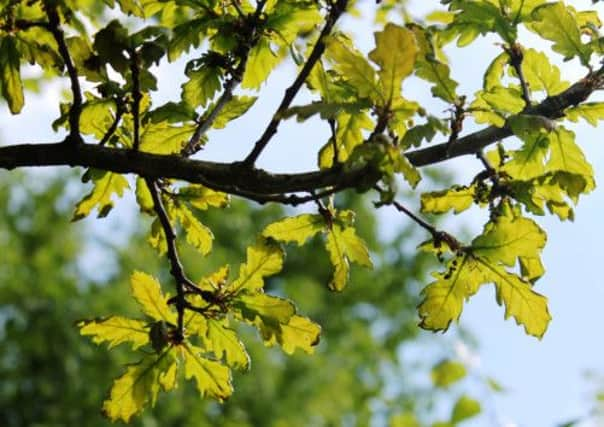From little acorns...


It’s a wonderful opportunity to do a great thing for the environment – plant a tree and bring about a myriad of benefits, many of which will have long-term impact in times of climate uncertainty.
Not everyone has the space to grow an English oak, and those who have the space are unlikely to have the time to see the oak they plant grow to be a mature specimen; we plant trees for our children and our grandchildren to appreciate.
Advertisement
Hide AdAdvertisement
Hide AdBut even if you can’t grow an oak (or don’t want to grow an oak) you should be able to recognise the oak. It’s a tree which has played such an important part in England’s history.
Our native oak is Quercus robur, but it’s also to be found growing in various parts of northern Europe, North Africa and even as far away as south-west Asia. Quercus robur isn’t a garden tree; it’s a slow-growing potential giant. It demands space; it also demands time to grow and spread its huge canopy, developing a home to hundreds of different insects, encouraging birds to take up residence, and even playing host to various forms of fungi.
Quercus robur, the pedunculate oak, is a tree to be appreciated; like a good wine or a fine view, it demands more than just a quick glance.
But it’s not the only oak to be living happily in Britain. Q patraea, the sessile oak, is also here in numbers, and it’s difficult to tell which is which – unless you know the tell-tale signs. The acorns of the English oak have stalks, but the leaves do not; the acorns of the sessile oak do not have stalks, but the leaves do.
Advertisement
Hide AdAdvertisement
Hide AdWhen you’ve memorised that, you might be interested in some of the other forms of oak found in this country. They aren’t here in great numbers, but they include Quercus rubra, the red oak from North America; Q cerris, the Turkey oak, which likes alkaline soil; Q alba, the white oak and yet another American import; Q coccinea, which is renowned for its autumn colour; Q palustris, the Spanish oak; and Q frainetto, the Italian or Hungarian oak, whose leaves are dark green above but pale and woolly underneath.
This year’s National Tree Week runs from November 21 to December 1. For more information go to www.treecouncil.org.uk